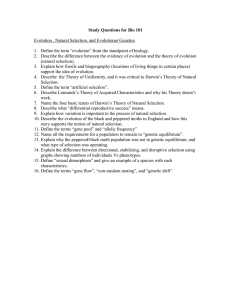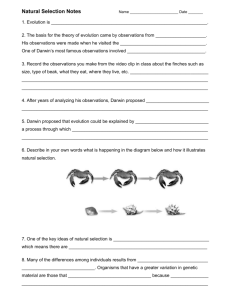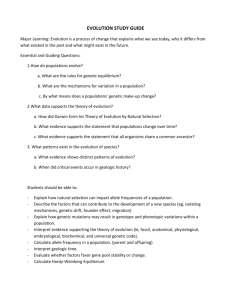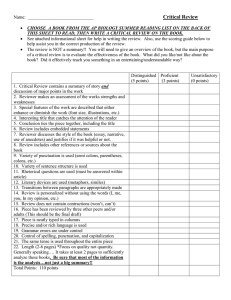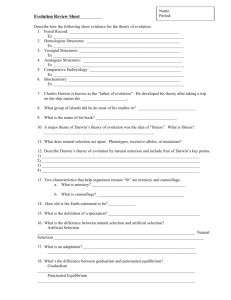Unit Plan- EVOLUTION
advertisement
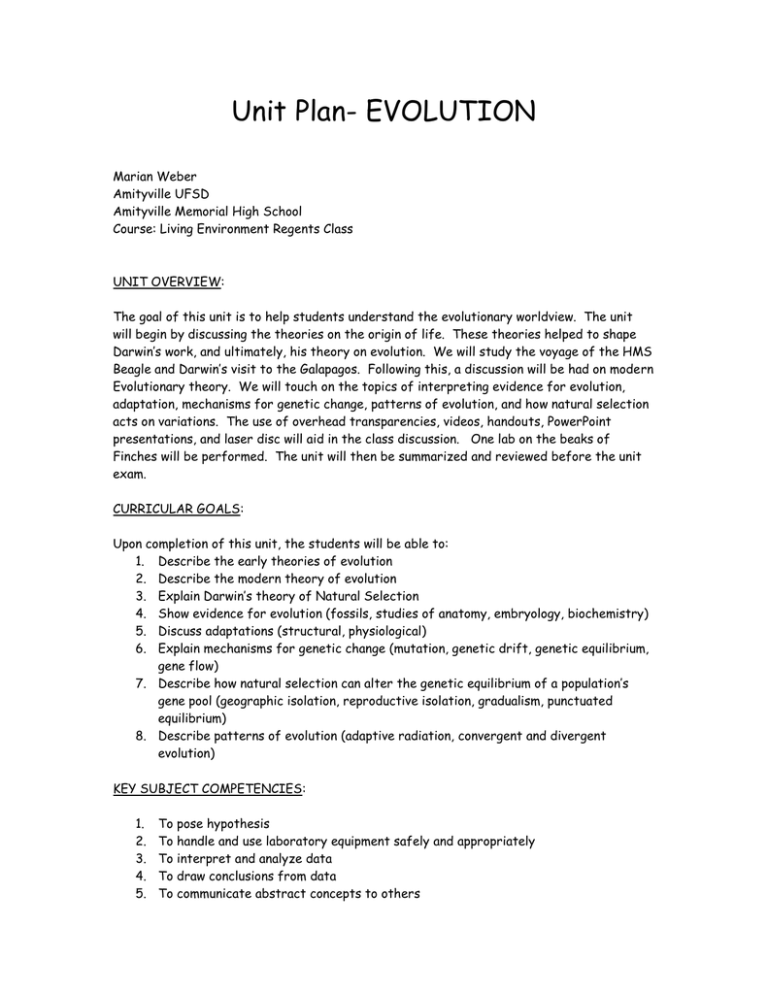
Unit Plan- EVOLUTION Marian Weber Amityville UFSD Amityville Memorial High School Course: Living Environment Regents Class UNIT OVERVIEW: The goal of this unit is to help students understand the evolutionary worldview. The unit will begin by discussing the theories on the origin of life. These theories helped to shape Darwin’s work, and ultimately, his theory on evolution. We will study the voyage of the HMS Beagle and Darwin’s visit to the Galapagos. Following this, a discussion will be had on modern Evolutionary theory. We will touch on the topics of interpreting evidence for evolution, adaptation, mechanisms for genetic change, patterns of evolution, and how natural selection acts on variations. The use of overhead transparencies, videos, handouts, PowerPoint presentations, and laser disc will aid in the class discussion. One lab on the beaks of Finches will be performed. The unit will then be summarized and reviewed before the unit exam. CURRICULAR GOALS: Upon completion of this unit, the students will be able to: 1. Describe the early theories of evolution 2. Describe the modern theory of evolution 3. Explain Darwin’s theory of Natural Selection 4. Show evidence for evolution (fossils, studies of anatomy, embryology, biochemistry) 5. Discuss adaptations (structural, physiological) 6. Explain mechanisms for genetic change (mutation, genetic drift, genetic equilibrium, gene flow) 7. Describe how natural selection can alter the genetic equilibrium of a population’s gene pool (geographic isolation, reproductive isolation, gradualism, punctuated equilibrium) 8. Describe patterns of evolution (adaptive radiation, convergent and divergent evolution) KEY SUBJECT COMPETENCIES: 1. 2. 3. 4. 5. To To To To To pose hypothesis handle and use laboratory equipment safely and appropriately interpret and analyze data draw conclusions from data communicate abstract concepts to others 6. To observe relationships between cause and effect GENERAL STUDY SKILLS; 1. 2. 3. 4. 5. 6. 7. Critical thinking Compare and contrast Recognizing cause and effect relationships Group work Note taking Listening Using models and diagrams STRATEGIES: 1. 2. 3. 4. 5. Cooperative learning Laser disc Group discussion Lecture Laboratory experiments INSRUCTIONAL MATERIALS: Overhead projector, overhead transparencies, handouts of diagrams, laboratory handouts, homework dittos, various laser disc slides and movies, PowerPoint presentations, videos, textbook ASSESSMENT: 1. 2. 3. 4. 5. Discussions Lab work Homework Quizzes Exams
